
Transit expert Steven Higashide discusses how to plan, run and win the fight for effective transit.

Transit expert Steven Higashide discusses how to plan, run and win the fight for effective transit.

What Indy learned when it opened a mostly bus-only rapid transit route
IndyGo opened its Red Line last year, connecting many important parts of Indianapolis along a 60% bus-only rapid transit route.
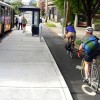
Why the pedestrian experience shouldn’t be so ... pedestrian
Transit equity benefits all of society — both those who use it and those who don’t. It provides access to jobs, schools and other opportunities to underserved communities, people who can’t afford the costs related to owning a car as well as those who use it because of convenience or to limit their contribution to the problems of congestion and pollution. In turn, the reductions in traffic and emissions they represent benefit those who drive. But we should also consider the equity of infrastructure such as sidewalks, crosswalks and drainage, all of which affect connectivity, accessibility and safety for people who walk, roll and ride bikes in Houston.
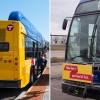
How BRT service rapidly improved ridership in the Twin Cities
Metro Transit, which operates public transportation service in the Twin Cities metropolitan area, launched the region’s first bus rapid transit line (BRT) in 2016 with its METRO A Line. Last year, a second BRT line was added, and more are planned for the future.

BRT could be a game changer if Metro plays to its strengths
It will take 20 years to implement the METRONext plan but if done correctly, getting riders where they want to go will be the top priority and the entire Metro system will work in concert to provide the best service possible.
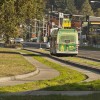
Bus rapid transit is coming. Here’s what you need to know.
Bus rapid transit — BRT for short — is part of METRO’s plan for improving public transportation in the Houston area. It will feaure 75 miles of MetroRapid service on dedicated, bus-only lanes. Here’s a breakdown of BRT.

How buses can drive equity and success in cities — and even help kill zombie ideas
Ridership in most major metropolitan areas of the U.S. has been steadily declining in recent years. And transit experts worry about the trend’s impact on cities — economically and socially. But when you improve buses, as the experience in Houston and in so many other places shows, ridership and relevancy increase.

If you are disabled and live in the Houston area, we’d love to hear your story
The Kinder Institute for Urban Research is launching a new survey to better understand housing and neighborhood challenges faced by those living with disabilities in Houston.

Understanding Houston: How a business manager navigates his multi-county commute in Houston
This is a part of a series connected to our partnership with the Greater Houston Community Foundation's regional project Understanding Houston. This story, and others in the series, also appears on the Understanding Houston website.
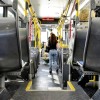
How METRO made bus service a priority and became a transit trendsetter
In 2015, METRO took its outdated bus network down to the studs and designed an entirely new regional transit system that made bus service less complicated and more frequent along the busiest routes. The results made transportation officials in cities across the country take notice.

Transit Adjacent Development and Neighborhood Change in Houston
This study explores how land use has changed between 2010 and 2016 in transit adjacent development (TAD) areas of Harris County, defined as census block groups within one mile of light rail stations, transit centers, and Park & Ride locations.

Each year, the Atlanta Regional Commission and its partners conduct the Metro Atlanta Speaks survey, similar to Houston's Kinder Houston Area Survey.

Washington is a great (baseball) town. So is Houston.
The World Series faceoff revealed some additional similarities between the two seemingly-contrasting cities.
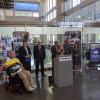
The first things to come following the $3.5 billion bond approval for METRONext
On Tuesday, voters approved the bond vote with 68% voting in favor.

How riding Metro every day changed my perspective on transit funding
Houston area voters will decide November 5 whether or not to support Metro’s ballot referendum, which borrows $3.5 billion for system improvements and expansions.
Rice University
Kraft Hall
6100 Main Street, Suite 305
Houston, TX 77005-1892